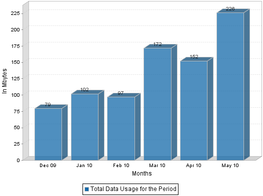Aw, what the heck. Today is a nostalgic one thanks to Steve Jobs. Everyone I read keeps posting about how they've used so many Apple devices over the years. So I took stock.
Apple ][e (loved)--I didn't have my own, I just used Mike Han's a lot. Circa 1983.
Apple //c (owned)--the ][e was off the market by the time my parents bought me my own computer.
Apple Macintosh (loved)--again, I didn't have my own, I was forced to go over to Felix Sheng's and Howard Slatkin's houses and be jealous of theirs. Howard's dad had the original Talking Moose app, which I fondly recall to this day.
Apple Personal Modem 300/1200 (owned)--this is the gadget that really changed how I view the world. I fell in love with online communication back in late 1987.
Macintosh LC (owned)--my first Mac. Kind of a piece of crap, particularly after I installed AutoDoubler to find hard drive space and my processor slowed to a crawl.
Macintosh SE/30 (loved)--I inherited this when I took over my college newspaper. It's probably my all-time favorite computer, even though it was three years old when I used it. I had on it Eudora, Microsoft Word 5.1a, and a Klondike solitaire app, and it was just about perfect.
Macintosh Performa 636CD (owned)--the Mac I got after I wiped the LC hard drive and sold the machine. It was fine.
Power Macintosh (used and owned)--I had Power Macs at two different jobs in the 1990s and early 2000s, and purchased one for myself in 1998 after I moved to New York and needed a decent machine at home for freelancing. I forget the model number, but I was very happy with my personal Power Mac, which I upgraded several times over the years. I used Power Macs in vintage (pre-PowerPC) mode as well as with G3 and G4 chips. Soldiering on through Apple's darkest years, loyally, hopefully.
PowerBook G3 (loved)--my close second on the favorites list. Gorgeous, powerful, transportable, rugged. The Economist got me one for my international travels and it went around the world with me with aplomb. To this day part of me wishes they'd bring back an evolved version of this laptop design, with its soft-touch matte black exterior.
iMac (loved)--I was still plugging away on my hotrodded Power Mac when the iMac blew onto the scene. I didn't buy one, but everyone else did, including my my mom. Bondi Blue everywhere. (Mom is on her third iMac now.)
iBook (used)--when I met my wife, she had the Bondi Blue Tangerine Orange Mac laptop. Cute and durable.
iPod (owned)--the original model, 2001. My parents thought I was nuts buying a $399 gadget that no one had ever heard of. (I still have it, and it still works, although the battery is shot.)
iPod mini, 3G, nano, Classic, Shuffle (owned)--I believe my household has had 10 iPods through the years. Five of them are currently in use in one way or another. We never did get an iPod Touch, though.
PowerBook G4 (owned)--purchased when the iBook and PowerBook G3 both fell apart. Served us well for years.
iPhone (owned)--bought the original model the first weekend. Rock star.
MacBook (owned)--our current machine is another gem. Fast, useful, attractive, everything an Apple product always is. I have a nearly identical MacBook Pro at work.
iPhone 3G (used)--Amy got this one, I didn't.
iPhone 3GS (owned)--and now we both have this guy, awaiting the 5, whenever it comes out.
iPad (owned)--we didn't buy one, then Amy got one, then we didn't use it for awhile. We have since discovered that it is our three-year-old son's favorite toy. (I still don't use it for much. Maybe the iPad 2 will change that.)
The only company in my life with a similar longevity is Nike, whose shoes I've been wearing since first grade. Quite a run for a technology company. Godspeed, Apple.
 So I did what any responsible parent should do. I downloaded and tested some age-appropriate apps and let my older son explore. The iPad and iPhone are genius devices in their usability, with their clutter-free fascia and immersive interfaces. So now the gadget is teaching the boy animals, colors, shapes, letters, memory retention and matching, spatial relations, you name it. We also set up guidelines: no screens between breakfast and dinner, no YouTube (Thomas the Tank Engine snuff films! who knew?), you have to play out difficult boards and not quit things quickly, etc.
So I did what any responsible parent should do. I downloaded and tested some age-appropriate apps and let my older son explore. The iPad and iPhone are genius devices in their usability, with their clutter-free fascia and immersive interfaces. So now the gadget is teaching the boy animals, colors, shapes, letters, memory retention and matching, spatial relations, you name it. We also set up guidelines: no screens between breakfast and dinner, no YouTube (Thomas the Tank Engine snuff films! who knew?), you have to play out difficult boards and not quit things quickly, etc.
